So far we’ve covered playback sources, discussed options for amps and speakers, and looked at ways to judge improvements to your setup by listening. This week we’re focusing on the more compact alternative to a room full of hi-fi gear: Headphones.
Headphones Saved My Life
So here’s the deal: You’d love to have super high fidelity sound for ear training, but you’ve got noisy neighbours, no space and you’re flat broke. If this sounds like you then headphones are the answer. Nothing reveals the detail of well recorded music like a good pair of headphones and without a doubt it is the best way to get ‘champagne’ sound on a ‘lemonade’ budget!
Headphones come in all shapes and sizes. If you want to find the right headphones for you, you need to ask yourself a few questions:
- How portable do you need them to be?
- Will you be using them in a noisy environment?
- Are you worried about annoying the person next to you on the bus?
- What will you be driving them with?
The first decision when choosing a pair of headphones is: in-ear or external.
Kick It With Cans
![Pair of cans (closed back) [Photo: andresrueda@Flickr] Pair of cans (closed back) [Photo: andresrueda@Flickr]](https://www.musical-u.com/wp-content/uploads/2010/07/nl6_closed_back.png) External headphones are composed of two speakers on a headband which sit outside the ears. Full size headphones cup and enclose the ear (called “circumaural” by audio geeks and “cans” by everyone else). Full size headphones are usually designed for home/studio use but it’s become quite fashionable to wear them out and about (at least for Craig David fans) and you can find fold-up models if that’s what you need them for.
External headphones are composed of two speakers on a headband which sit outside the ears. Full size headphones cup and enclose the ear (called “circumaural” by audio geeks and “cans” by everyone else). Full size headphones are usually designed for home/studio use but it’s become quite fashionable to wear them out and about (at least for Craig David fans) and you can find fold-up models if that’s what you need them for.
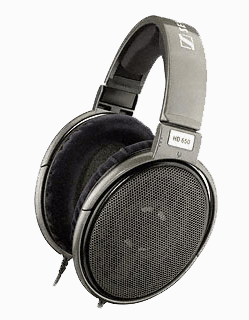
Headphones with an open mesh back rather than a fully enclosed plastic shell are the ultimate in sound quality – but think carefully before buying a pair; they have very little isolation and too much spill to be used on public transport, or when recording vocals in the studio (where the microphone may pick them up).
As well as pure sound quality, comfort is important. Spend some time wearing cans before you buy them. I can wear my favourite Sennheiser HD650s for hours, but other pairs can give me a headache after a few minutes. Some portable players can struggle to drive full size headphones so make sure you try the phones with your player too.
Don’t be tempted into buying the 80’s style headphones which sit on the ear as they offer a worst-of-all-worlds combination of poor comfort, sound quality and isolation!
I Feel Just Like (Ear)Buddy Holly
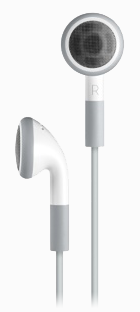 In-ear headphones will never sound as good as a decent pair of cans but when it comes to portability they can’t be beat. Most portable music players on the market ship with ear bud headphones which are, almost without exception, of appalling quality. Spending a few pounds on upgrading your ear buds will reap big sonic benefits.
In-ear headphones will never sound as good as a decent pair of cans but when it comes to portability they can’t be beat. Most portable music players on the market ship with ear bud headphones which are, almost without exception, of appalling quality. Spending a few pounds on upgrading your ear buds will reap big sonic benefits.
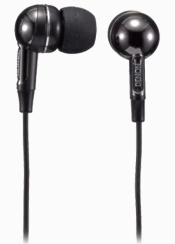
Canalphones take the ear bud concept a step further by forming a seal in the ear canal the same way as an ear plug. This improves isolation and creates a sealed chamber in the ear which provides a better frequency response, but the idea of pushing something into your ear puts a lot of people off. Most higher end canalphones are available with a choice of tips and making the right choice is the key to comfort. When walking you may find rubbing noise from your clothes is transmitted up the cable into your ear. I counter this by running the cable up and over the top of my ears to provide some isolation.
There have been a few scare stories in the press about canalphones potentially leading to hearing damage. I find this slightly bizarre as using canal phones on the London Underground allowed me to significantly drop the volume of my MP3 player because of the excellent isolation available! Use them sensibly and you shouldn’t have a problem.
Come On Feel The Noise
Several companies offer noise-cancelling headphones. These work by listening to the ambient noise and playing an antiphase signal to cancel it. Though it sounds like an appealing prospect they only work well with low frequency rumbles like the engines of a passenger jet, and introduce nasty artefacts to the sound – meaning they are of little use for ear training. Couple this with high cost and a battery pack and it is hard to recommend them.
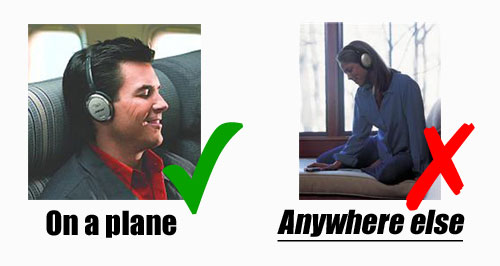
In a similar vein, Bluetooth headphones offer the convenience of not having to worry about getting tangled in cords but the sound quality leaves something to be desired.
Shut Up And Drive
Portable players sometimes have trouble driving high end cans because of something called impedance. This isn’t an electronics site so I don’t intend to cover impedance in depth (especially as Sound On Sound already have already written an excellent article), but there is a fair amount of nonsense floating around the internet on the subject so I will mention it briefly.
Your source and your headphones both have a property called impedance, measured in Ohms Ω. Most sources and cheap consumer headphones have a low impedance while the impedance of professional headphones is much higher. When impedances are similar the headphones are driven with maximum power, but are hard for the source to control accurately. On the flipside, a pair of high impedance professional headphones will give more accurate sound reproduction, but may not be as loud. Any good headphones should state the impedance on the box and some models are available in multiple impedances. This is another good reason to try before you buy.
If you do buy some posh cans don’t be worried if you have to turn your iPod up to nearly maximum volume to get a decent listening level. Firstly, because of the impedance difference mentioned above they won’t actually be driving maximum power, and secondly because music players sold in Europe are artificially limited to comply with French regulations on headphone volume. The quick-witted amongst you will have realised this is a ridiculous law since a pleasant listening level on high impedance cans would be eye-wateringly loud on low impedance canalphones!
Hooked On Phonics?
For budget hi-fi headphones can’t be beaten. Spending £100 on speakers will get you a decent quality set of entry level stand mounts – but will net you an excellent pair of headphones. Even if you have a great set of speakers they are only one part of a system which includes the room and their position within it. So unless you have access to a studio and some top quality speakers, headphones will give you the ultimate in detail.
So are headphones the be all and end all for high fidelity audio?
Unfortunately not. When you listen to a pair of loudspeakers the signals from each blend and phase in the air to create a unique mix at each of your ears, giving you the perception of a continuous stereo soundstage rather than a pair of wooden boxes.
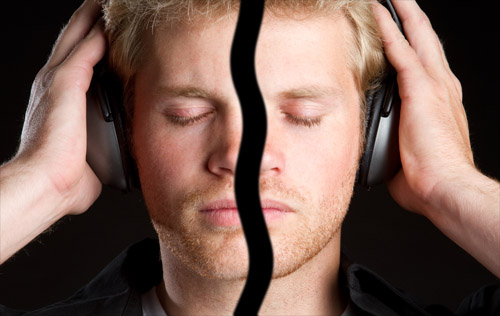
Headphones on the other hand deliver each channel to a single ear. The vast majority of music is recorded assuming that you will be listening to it on loudspeakers, meaning headphones can’t give you the stereo image the producer intended you to hear (if you seek them out special “binaural” recordings are available intended for headphones). Most modern music is recorded without extreme panning so it still sounds acceptable, but older tracks can sound quite strange – try listening to ‘Taxman’ by The Beatles ![]()
![]() on headphones, for example.
on headphones, for example.
When working in a home studio it can be quite tempting to listen entirely on headphones because of the convenience and ease with which you can hear fluffed notes and glitches, but make sure you spend time using loudspeakers when mixing or mastering or you will produce something that sounds wonderful on headphones, but terrible everywhere else.
Sound Advice
Well, that concludes the Wired For Sound series. I hope you have enjoyed the articles and that it helps you in the quest for the ultimate ear training set up.
Reading back through the four posts I think there are some common themes that emerge:
Avoid bells and whistles
Every penny spent on a gimmicky feature is a penny they didn’t spend making the core sound better.
Upgrades don’t need to cost the earth
Small changes can make a big difference.
Try before you buy
And if you aren’t sure – have a friend help you do a blind test.
Be wary of salesmen and marketing claims
If a new product sounds too good to be true… it usually is!
Have fun!
Music is one of those wonderful things that exists for no other reason than that it is beautiful. Don’t forget upgrading your hi-fi is about the emotions it produces, not the grim quest for the last iota of fidelity.
Do you have any tips for selecting gear for high quality audio? Or are you struggling and need advice? Leave a comment below or come talk about it in the Forums.

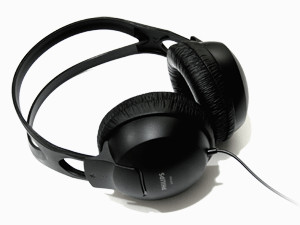

![Some over-the-ear headphones can be folded for travel Some over-the-ear headphones can be folded for travel [Photo: CLF@Flickr]](https://www.musical-u.com/wp-content/uploads/2010/07/nl6_foldable.jpg)





